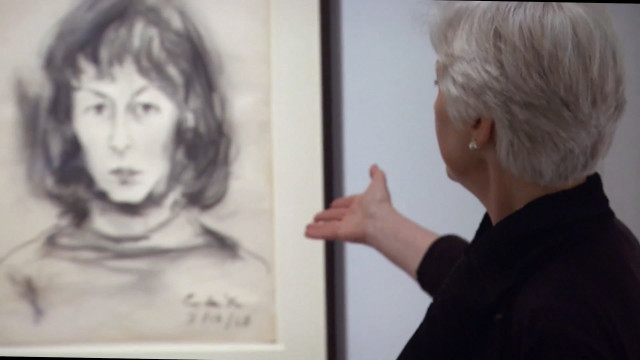For this week’s Urban Voices segment, we took a look at a painter who developed her artistic voice in an urban setting. Elaine de Kooning learned her craft by frequenting the many art museums of New York City and studying their collections. In the 1940’s and 50’s she became part of a new art movement called “Abstract Expressionism.” Bold, fluid and emphasizing gestures, much of her work involved male subjects and was portraiture.
The National Portrait Gallery in Washington is honoring her contributions to the art world with a retrospective of her work. For this week’s Urban Voice, we present the Chief Curator of the exhibit “Elaine de Kooning: Portraits,” Brandon Fortune.
Elaine de Kooning honed her skills in the 1940’s with another artist from the “Abstract Expressionism” movement who became quite famous – Willem de Kooning. He also became her husband. Through him she met many progressive artists. Curator Brandon Fortune describes their relationship: “Well their relationship was one of teacher and student. He was 13 years older than she was. It was also a romantic relationship. They married in December of 1943 and never divorced, although they were separated for about 20 years. They stayed together until her death in 1989.”

In order to differentiate herself from her husband and his work, Elaine de Kooning began signing her paintings “EdK.” She painted Willem de Kooning as well. Other subjects who sat for Elaine included friends and fellow artists, writers and athletes. Her most famous subject was more than likely President John F. Kennedy. There are nine drawings and paintings of him in the exhibit. JFK first posed for de Kooning in December 1962 at his home in Palm Beach, Florida.
Americas Now also visited a Georgetown art and antique gallery with two additional portraits of JFK by EdK. The director of L’Enfant Galerie Peter Colasante told Americas Now that Elaine de Kooning “understood she had an opportunity no one else had. John F. Kennedy was basically a shy person, regardless of what his reputation is, and he didn’t think he was suitable material to have his portrait painted. Elaine de Kooning caught him literally unaware in his own home.”
The “Elaine de Kooning: Portraits” exhibit opened at The National Portrait Gallery in March. It will run until January of next year.
Facebook: https://www.facebook.com/npg.smithsonian
Twitter: https://twitter.com/npg
Instagram: https://instagram.com/smithsoniannpg/
 CGTN America
CGTN America
